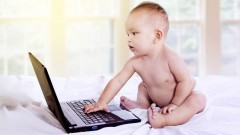User Experience (UX) Conceptual Model Design (Udemy.com)
Learn the secret of intuitive design: Design a great conceptual model.
Created by: Susan Weinschenk
Produced in 2015
 What you will learn
What you will learn
- How to create a conceptual model
- How to connect a conceptual model to the users' mental models
- How to decide on major user objects
- How to describe the attributes, actions, and views of major user objects
- How to create a navigation model diagram
 Quality Score
Quality Score
Overall Score : 86 / 100
 Live Chat with CourseDuck's Co-Founder for Help
Live Chat with CourseDuck's Co-Founder for Help
 Course Description
Course Description
Design a great user experience (UX) by first designing a conceptual model.
Why are some websites, software, apps, and devices easy to use and others are not? Why do users like some products and reject others? Designers of products that are easy to use know the secret -- They design a conceptual model of the product that matches the target audience's mental model of how it should work. In this course you will learn the secret of how to create a conceptual model.
About This Course:
Over 500 very happy students
Unconditional 30 day money back guarantee from Udemy
All future upgrades and lectures are included for FREE
Some examples of what's in the course:
- How to create a conceptual model
- How to connect a conceptual model to the users' mental models
- How to decide on major user objects and their "views"
- How to make critical conceptual model decisions before you wireframe or prototype a single screen
- How to make sure that the conceptual model of what you design fits the users' mental models
- How to use the data you have from user research to create your conceptual model
- The critical components of navigation and action bar design
- How to use card sorting techniques to organize information in a way that makes sense to your audience
- Quizzes throughout the course to test your knowledge
- Exercises throughout the course to practice what you are learning
Click the BuyNow button at the top right of this page and get started right away. You don't want to delay learning the secret of using a conceptual model to create products that are a delight and easy to use. Who this course is for:
- User Experience Professionals, Product Managers, Product Designers, Web Designers
 Instructor Details
Instructor Details

- 4.3 Rating
 16 Reviews
16 Reviews
Susan Weinschenk
I have a Ph.D. in Psychology and decades of experience as a behavioral scientist, applying psychology to the design of digital products. I'm a consultant to Fortune 1000 companies, start-ups, and educational and government organizations.
A client once referred to me as "The Brain Lady", and it stuck. Probably because I like to teach and consult about brain science.
I'm currently the Founder and Principal of The Team W. I consult, coach, teach, and speak about behavioral science, brain science, psychology, design, innovation, and user experience. I've been lucky enough to travel around the world as a keynote speaker.
I am also an Adjunct Professor at the University of Wisconsin.
My clients include Disney, Amazon, The Mayo Clinic, Zappos, the Federal Trade Commission (USA), and the European Commission.
I like to write books, including: 100 Things Every Designer Needs To Know About People, How To Get People To Do Stuff, 100 Things Every Presenter Needs To Know About People, and Neuro Web Design: What makes them click? I blog at my own website and I blog for Psychology Today.
My work over the years has included the design of websites, software, medical devices, TV ads, physical devices, experiences, and physical spaces to make them persuasive, usable and motivating.
I live in Wisconsin, USA, with my husband. My two children are grown and "launched". When not teaching, speaking, writing, or blogging, I perform







